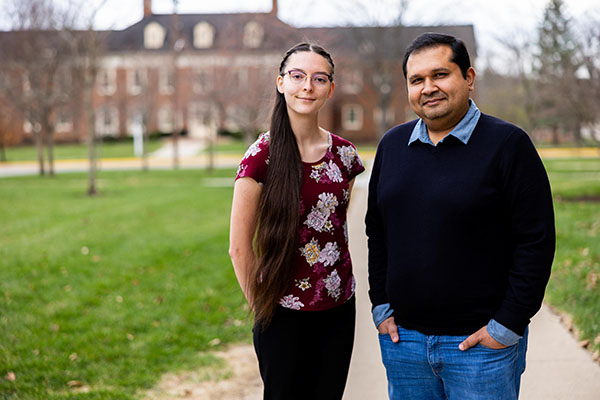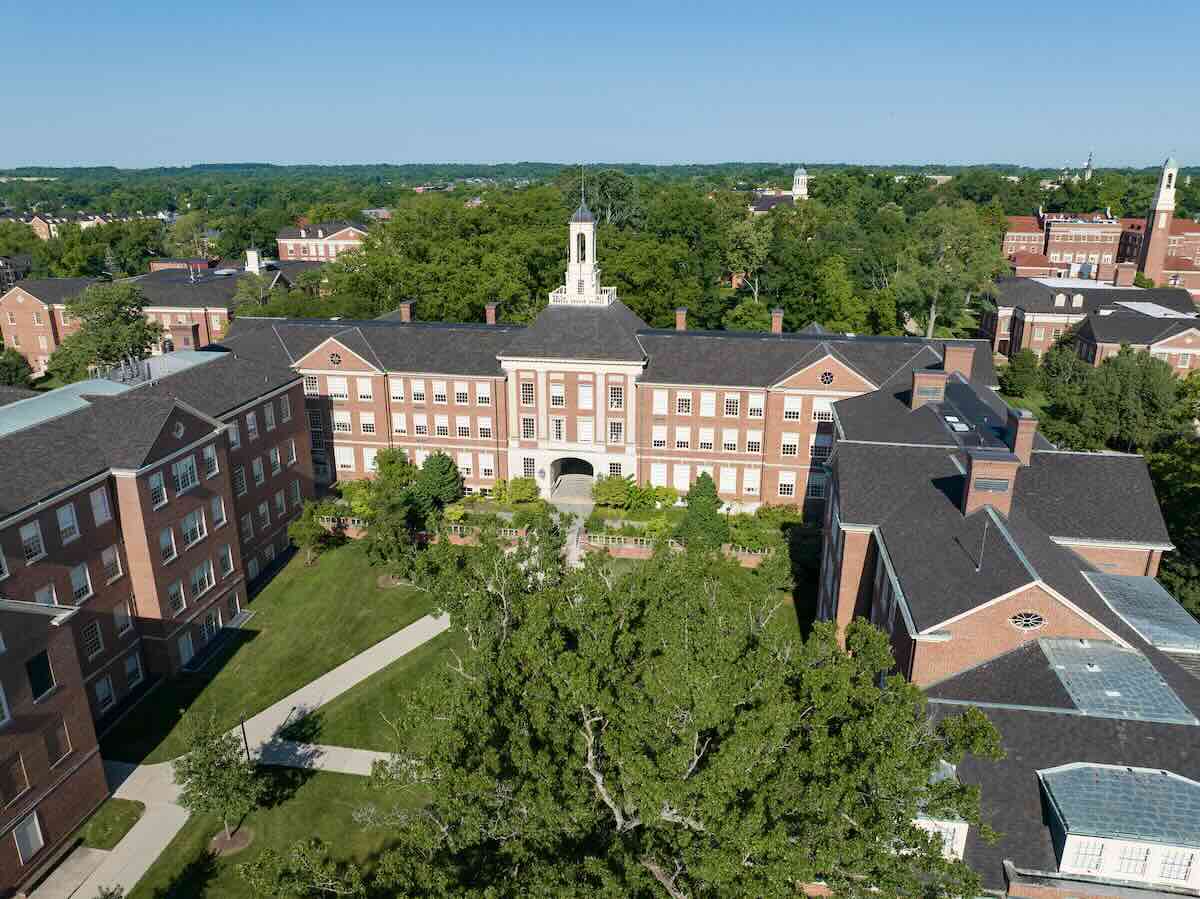

Department of Physics
The Department of Physics is dedicated to teaching and scholarship, with an emphasis on achieving close student-faculty relationships. With a versatile degree program and interdisciplinary research, we prepare students for advanced study or employment in physics, biological physics, applied physics, and related fields.
Welcome: Director of Instructional Labs
"While pursuing my graduate studies, I was always drawn to the academic world. I fondly remember the two years I spent here in the physics department earning my Master's degree. From my time in the research lab probing the behavior of cold atoms to the insightful classes and guidance of the excellent faculty, I cherish the growth I experienced here. It is truly a coincidence, and a wonderful one at that, to find myself returning to Miami University! It is an honor and a privilege to serve as the physics department's new Director of Instructional Labs. I look forward to embarking on this new chapter of my life in a place I have already grown to love."
– Ian Dilyard

Our Programs
Physics in the News

The Crawfords welcome third golden retriever, Charlie, to family
They fostered the ‘big bundle of enthusiastic love’ before adopting

Quantum leap
Miami student taking quantum computing by storm, helping university to lead in cutting-edge field

Announcing the CAS Dean’s Scholars for the 2025-2026 academic year
These 25 students have received expense stipends to work with faculty mentors on independent studies.
Our Upcoming Seminars and Events
Our Mission
The Department of Physics is dedicated to teaching and scholarship, with an emphasis on achieving close student-faculty relationships. Our goals are to provide a rigorous grounding in the scientific process and a firm scientific understanding of the world, to foster critical thinking and to provide scientifically literate, liberally educated citizens through service and liberal education courses. We provide undergraduate and graduate majors with solid preparation in the discipline for advanced study or employment. Our scholarship should be inclusive, bringing faculty, graduate students, and especially undergraduates into participation in the joy of learning at the frontiers of human intellectual endeavor.
The primary functional aspects of our mission can be classified as:
- Educating and preparing students in our undergraduate majors programs for advanced study and/or employment following their graduation from Miami University.
- Serving as a major contributor to the scientific and technological literacy of students through participation in the implementation of the Miami Plan.
- Providing the knowledge, laboratory experience, and training in analytical reasoning and critical thinking required as the basis for advanced study for students majoring in other fields of science, mathematics, and engineering.
- Developing the skills in basic physical science of present and future teachers in elementary and secondary schools, and providing opportunities for continuing education of the public of our region and nation.
- Extending the expertise and competence in physics of our graduate students to prepare them for advanced study in the physical sciences and/or engineering or for employment.
- Engaging in scholarly activity that will extend the base of human knowledge through research and enhance the educational aspects of the Department's mission.
Our History

Miami Physics has its origins in the departments of natural philosophy (1832-45) and natural science (1845-73). The Physics and Chemistry Department was formed in 1885 under the leadership of Henry Snyder, and from 1898 to 1902, Raymond Hughes led the department, after which he went on to become Miami’s 15th president and Iowa State University’s 8th president. In 1903, the Physics Department was formed with Joseph Culler as chairman and the only full-time faculty member.
In 1926, Ray L. Edwards was named chair of physics, a position he held until 1956. During his 30-year tenure, the department grew with the addition of professors Dave Griffing, John Snider, George Arfken, Phil Macklin, Don Kelly, Joe Priest, Jim Poth, and Glenn Julian. Our Master’s program preceded the establishment of Miami’s Society of Physics Students Chapter in 1932, with several physics graduate students among the inaugural inductees.
During Dr. Edwards tenure, the department was located in Hughes Hall (which was renamed Kreger Hall in 1968). In 1961, Culler Hall was built specifically for the Physics Department, although it shared some of the space with Math, and later, Aeronautics. In 2014, the department moved back to a totally renovated Kreger Hall, complete with state-of-the-art teaching and research facilities, and common spaces for study and collaboration.
Miami Physics has a history of excellence in teaching, scholarship and leadership in physics education. In 1945, the prestigious Oersted Medal was awarded to Ray Edwards for notable contributions to the teaching of physics. Our faculty have published numerous texts, including Arfken’s world-renowned “Mathematical Methods for Physicists”; Priest’s “Energy: Principles, Problems and Alternatives”; Griffing’s “The Dynamics of Sports”; Kelly’s “Thermodynamics and Statistical Physics”; Arfken, Griffing, Kelly and Priest’s “University Physics”; and Paul DeVries’ “A First Course in Computational Physics”. The late Jim Poth and Beverley Taylor have been leaders at the state and national levels in physics education. Taylor was named both an APS Fellow and an AAPT Fellow in recognition of her contributions in that area.
Give to the Physics Department
Help us prepare the next generation of leaders—and our society as a whole. We have numerous scholarships, grants, and programs accepting contributions from donors like you.








